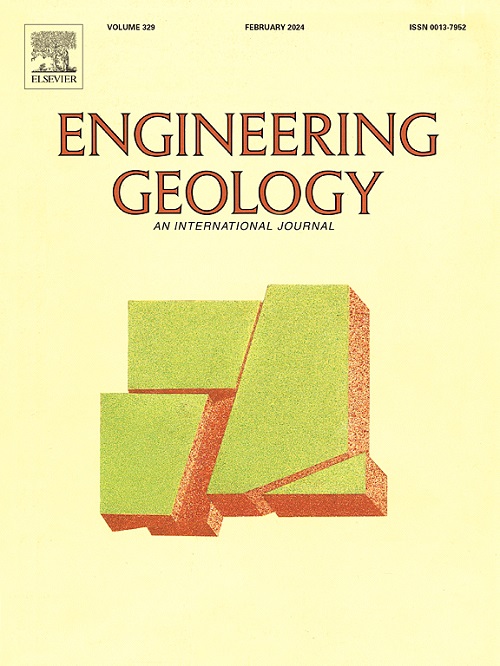路基断面形式对寒区高速铁路路基热-机械稳定性的影响
IF 6.9
1区 工程技术
Q1 ENGINEERING, GEOLOGICAL
引用次数: 0
摘要
本文研究了路基断面形态对抗冻胀路基结构热-水-力学稳定性的影响,这对寒区高速铁路的安全运行至关重要。以中国季节性冻土区牡丹江-佳木斯高速铁路为研究对象,采用现场实测与现场分析相结合的方法,对典型路基断面进行了分析。研究目标如下:(1)在霜深为2.4 ~ 2.8 m时,研究不同断面抗冻胀路基结构温度的时空变化规律;(2)分析含水量随深度和温度的变化,注意到冬季在0°C附近未冻水含量下降15%,在解冻期间增加10%;(3)表征层状变形演化及其与温度和含水量的动态关系;(4)评价阴晴坡现象和断面形式对路基稳定性的影响。主要研究结果表明:(a)断面形态强烈影响路基内热态和水分分布;(b)冻胀峰值在路堤1.49 mm至岩屑2.56 mm之间,随断面形态变化显著;(c)冻胀受侵霜深度和路基水文条件的共同影响。研究结果为高寒地区高速铁路抗冻胀路基优化设计提供了重要依据。本文章由计算机程序翻译,如有差异,请以英文原文为准。
Impact of subgrade cross-sectional forms on the thermo-mechanical stability of high-speed railway subgrades in cold regions
This study investigates the impact of subgrade cross-section configurations on the thermal-hydraulic-mechanical stability of anti-frost heave subgrade structures, essential for the safe operation of high-speed railways in cold regions. Focusing on the Mudanjiang-Jiamusi high-speed railway in China's deep seasonal frozen soil region, we analyzed typical subgrade cross-sections using a combination of field measurements and field-based analyses. The objectives are as follows: (1) to examine temporal and spatial temperature variations in the anti-frost heave subgrade structure across different cross-sections, with frost depths reaching 2.4–2.8 m; (2) to analyze changes in water content with depth and temperature, noting a 15 % drop in unfrozen water content near 0 °C in winter and a 10 % increase during thaw; (3) to characterize layered deformation evolution and its dynamics in relation to temperature and water content; and (4) to evaluate how the shady-sunny slope phenomenon and cross-sectional form affect subgrade stability. Key findings reveal that: (a) cross-section configuration strongly influences thermal state and water distribution within the subgrade; (b) the peak frost heave, ranging from 1.49 mm in embankments to 2.56 mm in cuttings, varies significantly with cross-section form; and (c) frost heave is affected by both frost penetration depth and the subgrade's hydrological conditions. These results provide a critical foundation for optimizing anti-frost heave subgrade design for high-speed railways in cold regions.
求助全文
通过发布文献求助,成功后即可免费获取论文全文。
去求助
来源期刊

Engineering Geology
地学-地球科学综合
CiteScore
13.70
自引率
12.20%
发文量
327
审稿时长
5.6 months
期刊介绍:
Engineering Geology, an international interdisciplinary journal, serves as a bridge between earth sciences and engineering, focusing on geological and geotechnical engineering. It welcomes studies with relevance to engineering, environmental concerns, and safety, catering to engineering geologists with backgrounds in geology or civil/mining engineering. Topics include applied geomorphology, structural geology, geophysics, geochemistry, environmental geology, hydrogeology, land use planning, natural hazards, remote sensing, soil and rock mechanics, and applied geotechnical engineering. The journal provides a platform for research at the intersection of geology and engineering disciplines.
 求助内容:
求助内容: 应助结果提醒方式:
应助结果提醒方式:


